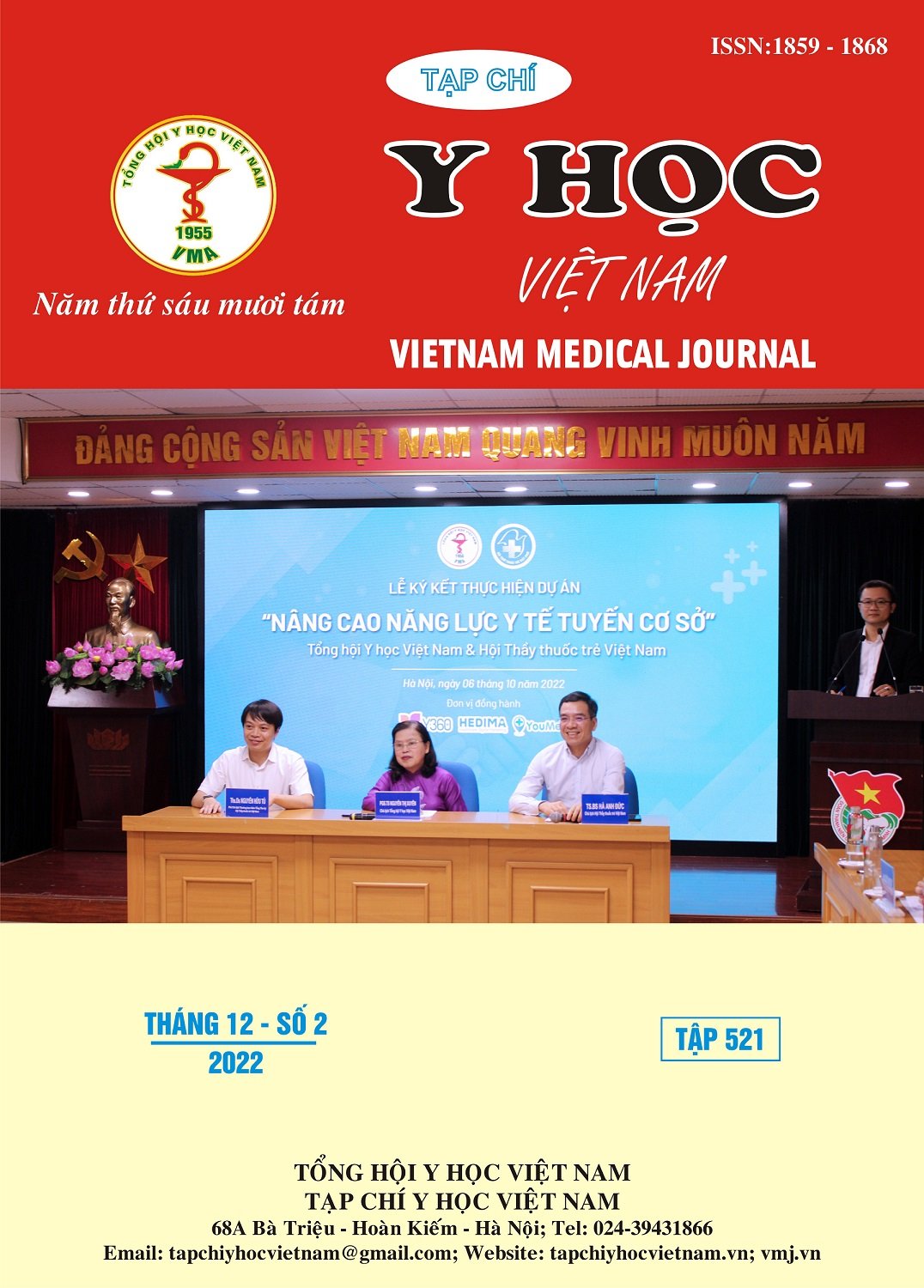ĐẶC ĐIỂM LÂM SÀNG, CẬN LÂM SÀNG CỦA TRẺ MẮC HỘI CHỨNG NGỪNG THỞ KHI NGỦ DO TẮC NGHẼN CÓ AMYĐAN - VA QUÁ PHÁT
Nội dung chính của bài viết
Tóm tắt
Tổng quan: Hội chứng ngừng thở tắc nghẽn khi ngủ (Ostructive sleep apnea syndrome: OSAS) ở trẻ em gây hậu quả nghiêm trọng và lâu dài: chậm phát triển về tâm sinh lý, giảm khả năng học tập và trí nhớ, mắc chứng trầm cảm hay hiếu động quá mức, có thể gây đột tử khi ngủ. Có 80% đến 90% bệnh nhân mắc hội chứng này không được phát hiện và điều trị. Amyđan-VA quá phát là nguyên nhân hay gặp nhất gây ra OSAS ở trẻ em. Chúng tôi tiến hành nghiên cứu này với mục tiêu: mô tả đặc điểm lâm sàng, cận lâm sàng của trẻ mắc hội chứng ngừng thở do tắc nghẽn khi ngủ có amiđan-VA quá phát. Đối tượng và phương pháp: nghiên cứu quan sát, mô tả được thực hiện trên 114 ca trẻ có amiđan - VA quá phát được chẩn đoán OSAS tại bệnh viện nhi trung ương từ T6/2017-T8/2019. Kết quả: Tuổi trung bình trong nhóm nghiên cứu là 5,5 tuổi, Tuổi thấp nhất là 2,5 tuổi và tuổi cao nhất là 12 tuổi. Bệnh nhân có chiều cao và cân nặng trung bình là 113,9cm và 22,7kg với BMI trung bình 16,9 kg/m2. Lý do đi khám chủ yếu là ngủ ngáy và có cơn ngừng thở được chứng kiến.Triệu chứng thường gặp nhất là: ngủ ngáy (3,3), thở miệng (2,7). AHI trung bình là 12,6 ± 11,2 cơn/ giờ, ở mức độ nặng. Độ bão hòa oxy máu thấp nhất là 75,7 ± 13,7%. Kết luận: Ở bệnh nhân mắc OSAS có Amiđan và VA quá phát triệu chứng thường gặp nhất là ngủ ngáy, có cơn ngừng thở khi ngủ, ngạt tắc mũi, thở miệng. Chỉ số AHI trung bình là 12,6 ± 11,2 cơn/giờ ở mức độ nặng. Sự phối hợp giữa chỉ số ngừng thở, giảm thở và độ bão hòa oxy trong máu đóng vai trò quan trọng trong đánh giá mức độ nặng của bệnh và lựa chọn phương pháp điều trị
Chi tiết bài viết
Từ khóa
đa kí hô hấp khi ngủ, amiđan quá phát, VA quá phát, hội chứng ngừng thở khi ngủ
Tài liệu tham khảo
2. Lumeng JC, C.R., Epidemiology of pediatric obstructive sleep apnea. Proc Am Thorac Soc, 2008. 5(2): p. 242-252.
3. Ahn, Y.M., Treatment of obstructive sleep apnea in children. Korean J Pediatric, 2010. 53(10): p. 872-879.
4. James Chan, J.C., Peter J. Koltai, Obstructive Sleep Apnea in Children. Am Fam Physician, 2004. 69 (5): p. 1147-1155.
5. Guilleminault, C., et al Adenotonsillectomy and obstructive sleep apnea in children: a prospective survey. Otolaryngol Head Neck Surg, 2007. 136(2): p. 169-75.
6. Arens, R. and C.L. Marcus, Pathophysiology of upper airway obstruction: a developmental perspective. Sleep, 2004. 27(5): p. 997-1019.
7. Mitsuhiko Tagaya, et al, Relationship between adenoid size and severity of obstructive sleep apnea in preschool children, international Journal of peadiatric otorhinolaryngology, 2012, 76(12), p:1827-1830
8. Jing Wang, et al, Correlation between obstructive sleep apnea and adenotonsillar hypertrophy in children on different weight status, Scientific Reports , 2019, Article number 11455
9. Haya S.Alsubie và Ahmed S.BaHammam (2017). Obstructive Sleep Apnoea: Children are not little Adults. Paediatric Respiratory Reviews, 21, 72-79.
10. Leila Kheirandish-Gozal, Hari P. R. Bandla và and David Gozal (2016). Montelukast for Children with Obstructive Sleep Apnea: Results of a Double-Blind, Randomized, Placebo-Controlled Trial. Annals of the American Thoracic Society, 13 (10), 1736-1741.


